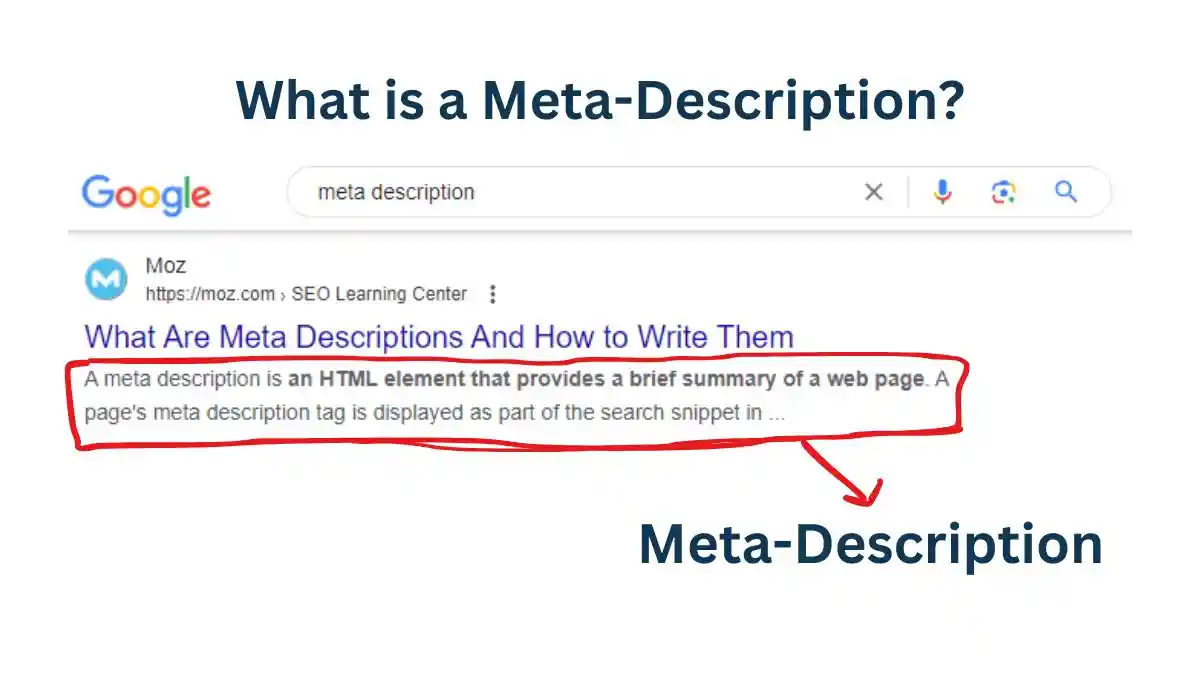Meta-descriptions are a crucial element of search engine optimization (SEO) that play a significant role in improving the visibility and click-through rates of web pages. In this article, we will explore what meta-descriptions are, why they are important, and how to create effective meta-descriptions that drive organic traffic to your website.
What is a Meta-Description?
A meta-description is a brief summary or snippet of text that provides a concise overview of the content on a web page. It is displayed in the search engine results pages (SERPs) below the page title and URL. Meta-descriptions are written in HTML code and are not visible on the actual webpage itself.
The primary purpose of a meta-description is to provide search engine users with a preview of what they can expect to find on the webpage. It acts as a mini advertisement that entices users to click on the link and visit the website.
Why are Meta-Descriptions Important?
Meta-descriptions are important for several reasons:
1. Improve Click-Through Rates
A well-crafted meta-description can significantly increase the likelihood of users clicking on your website in the search results. By providing a clear and compelling summary of your content, you can attract more relevant traffic to your website.
2. Enhance Search Engine Visibility
Meta-descriptions also play a role in improving the visibility of your web pages in search engine results. While they do not directly impact search rankings, a compelling meta-description can entice users to click on your link, which indirectly signals to search engines that your page is relevant and valuable.
3. Set Expectations for Users
By accurately describing the content of your webpage in the meta-description, you can set clear expectations for users. This helps ensure that the visitors who click on your link are genuinely interested in the information or products you offer, leading to higher engagement and conversions.
Creating Effective Meta-Descriptions
To create effective meta-descriptions, consider the following tips:
1. Keep it Concise
Meta-descriptions should be around 150-160 characters long to ensure they are fully displayed in the search results. Use concise and compelling language to grab the attention of users and entice them to click on your link.
2. Include Relevant Keywords
While meta-descriptions do not directly impact search rankings, including relevant keywords can help improve the visibility of your web pages. Incorporate keywords that accurately reflect the content of your webpage, but avoid keyword stuffing or over-optimization.
3. Highlight Unique Selling Points
Use the meta-description to highlight the unique selling points of your content or products. What makes your webpage stand out from the competition? Focus on the benefits users will gain by visiting your website.
4. Create a Call-to-Action
End your meta-description with a compelling call-to-action (CTA) that encourages users to click on your link. Use action verbs and create a sense of urgency to increase click-through rates.
5. Test and Optimize
Regularly review and test your meta-descriptions to see which ones perform best. Analyze click-through rates and make adjustments to improve the effectiveness of your meta-descriptions over time.
In conclusion, meta-descriptions are a vital component of SEO that can significantly impact the visibility and click-through rates of your web pages. By creating concise, compelling, and relevant meta-descriptions, you can attract more organic traffic to your website and improve your overall search engine rankings.

Leave a Reply